- We put the new Subaru Forester Hybrid to the test against the Honda CR-V Hybrid.
- Like the CR-V Hybrid, the Forester achieves better fuel economy while offering the same tech and practicality as the gas-only version.
2025 Subaru Forester vs. 2025 Honda CR-V: Hybrid SUV Showdown
The Forester is a hybrid now, but can it keep up with the Honda CR-V? We find out.
There's a lot of competition when it comes to small SUVs; it seems like every automaker produces one because ... well, they do. So when something arrives that has the potential to shake up the existing world order, we take notice. Especially when the new contender is also a hybrid.
Such is the case with the new sixth-generation 2025 Subaru Forester Hybrid, which finally adds an electrified powertrain into the mix. The Forester has a lot of catching up to do, as the gas version (yes, the new one) still sits all the way down in 10th place in our small SUV rankings. To put the new Subie to the test, we brought in stiff competition: the Honda CR-V Hybrid. The CR-V outsells the Forester by double, and for good reason. It's a solid option with real strengths and few weaknesses.
We compared the two vehicles across four of our ratings categories that we think are important for small SUVs: driving, interior, technology, cargo and value. And at the end, we'll share all of the category scores and the overall ratings of both vehicles to declare a winner.
Driving
Let's just get this out of the way: The Forester Hybrid is significantly better to drive than the gas-only Forester. In our testing, it was only 0.4 second quicker from 0 to 60 mph (8.8 seconds vs. 9.2 seconds), but we also measure 0-30 mph times because those are a better indicator of how these vehicles feel to drive around town. And in that regard, the Forester Hybrid enjoys a larger advantage (3.1 seconds vs. 3.8 seconds), which means that on the road, the powertrain feels significantly more robust.
It's also quieter inside, thanks to extra sound deadening to deal with wind and road noise, and with the electric motors helping to share some of the burden, less engine noise. Subaru has also changed the suspension for the hybrid models, so it rides better than the gas Forester, which at times felt like it was going to shake its parts off going over broken pavement.
However, the Forester Hybrid doesn't measure up in some key areas compared to the CR-V. The Honda's ride quality is better; it rounds off the edges of any harsh impacts while remaining taut enough to feel agile, and that's a tough balance to get right. It also offers better steering feel, and the braking is much more confident in panic stops, with a stopping distance of 120 feet from 60 to 0 mph versus the Subaru's 126 feet.
The Honda also holds a significant advantage with its powertrain. It has significantly more torque, and that helps it sprint from 0 to 60 mph in just 8.0 seconds. Drive these two back-to-back, and there's noticeably more get-up-and-go from the CR-V Hybrid than the Forester Hybrid.
Even though the CR-V is the better SUV to drive, there's one area where we recommend the Forester: If you're going to go off-road regularly. Most hybrid SUVs (the CR-V included) only send power to all four wheels when your tires are slipping. But the Forester Hybrid keeps the same great full-time AWD that the gas version has, so all the power from both the engine and the electric drive motor goes to all four wheels, all the time. That means it feels more confident in rain, snow or mud, a big reason that folks are drawn to Subies in the first place.
Scores
Subaru Forester Hybrid: 7.5/10
Honda CR-V Hybrid: 8.5/10
Interior
The Forester Hybrid was going to have a tough time here because the CR-V Hybrid's interior puts on a clinic when it comes to attention to detail.
Materials (as with all Subarus) are a mixed bag. Subaru leans into the outdoorsy aesthetic with varying degrees of success. The textured pattern on the doors and in front of the passenger is great, but the weird wetsuit-feeling fabric on the center storage bin that doubles as a front armrest is less enticing. But the biggest issue is the faux leather that covers the seats isn't convincing. Lots of vehicles also use the synthetic stuff, but Subaru's version of it feels weirdly slippery and unnatural. It seems like it will be quite durable and easy to clean, but that doesn't make it comfortable to sit on. We should note that the Forester Hybrid we tested was a Sport, but the top Touring trim level does get real leather.
Where the Forester excels, however, is spaciousness. Its low beltline and giant windows all around not only offer great visibility, they make the cabin feel really open and airy. It's also got a gigantic standard sunroof and that's great, but the shade is manually operated and it can be tricky to open or close it because you have to reach about a foot behind your head.
Even though the Forester technically has less rear legroom on paper (39.4 inches vs. 41.0 inches), after sitting in both, the Subaru feels significantly larger. Its wider door openings make it easier to climb in and out as well. Both vehicles will offer air vents and USB charging ports for backseat passengers, but the Forester Hybrid also offers heated rear seats on its Touring trim. (The CR-V does not.) Additionally, the Subaru also offers ventilated front seats (a favorite feature of mine), which again won't be found on any CR-V. Darn.
The Honda's interior offers better materials all around, and not just because we had a top-of-the-line Sport Touring trim with leather upholstery. All of the little bits you touch, turn, and press feel well considered and intentional, like the metal knobs that control the climate settings and volume. That kind of attention to detail is very subtle, but it makes a real difference.
Those knobs also hint at another Honda advantage: The CR-V has kept physical controls for lots of important things, including the heated seats, so you can always pop those on right when you get in. The Subaru requires you to interact heavily with its touchscreen for many tasks, and as we'll discover shortly, that's not a good thing.
Scores
Subaru Forester Hybrid: 8.0/10
Honda CR-V Hybrid: 8.5/10
Technology
If this is a contest solely based on screen size, the Subaru would be the clear winner. But because the software powering these screens and ease of use are both factors, it makes the picture a lot murkier.
The vertically oriented 11.6-inch touchscreen comes standard on all Forester models except the base model, and though it takes up a lot of dashboard real estate, we think that space could have been better used for other things like, say, physical climate controls.
It is also slow to respond to inputs and, compared to a modern smartphone, it feels ancient. Swiping around, pressing buttons to turn on my heated seats or activate an off-road mode, there’s always a delay and it’s especially bad if you just turned the car on. The screen can take 10 to 20 seconds to respond to inputs on startup. There's wireless Apple CarPlay or Android Auto, and both work better than the built-in features. But those still suffer from the same maddening input lag.
Our technology score also takes into account driver aids and they work great for the most part, except for the adaptive cruise control. When it's activated, it constantly asks you to keep your hands on the wheel and does a poor job detecting when they are, so you end up having to jiggle the steering wheel with some force every 10 seconds or so to let the system know you're still engaged. But the Forester Hybrid does offer a surround-view camera system as an option, something that the CR-V unfortunately lacks because the Honda has one of the worst rearview cameras of any new vehicle that's on sale today.
The CR-V’s 9-inch touchscreen (standard on all but the base model) may not look as impressive on the dealer floor, but it might be better to live with. This screen isn’t perfect either — it's running on an older version of Honda's infotainment, which the 2026 CR-V will change, thankfully — but at least it's easy to find everything. And, most importantly, there's no lag whether you're using the system or Apple CarPlay/Android Auto wirelessly.
It's also placed up higher on the dashboard where it's easier to see while driving. With the Subaru's, you feel like you end up looking down at your lap sometimes to see the bottom of the screen (aka where the climate controls are). Since Honda doesn't try to jam those controls in the screen and keeps them physical, the whole interior ecosystem benefits.
We also prefer the Honda's wireless charging pad, which is nicely rubberized and keeps your phone from sliding around. The Forester Hybrid's pad won't hold your phone in place if you turn, so it stops charging and bangs around the storage bin like a pinball. Not ideal.
Scores
Subaru Forester Hybrid: 7.5/10
Honda CR-V Hybrid: 8.5/10
Cargo
We'll start with the business end of these SUVs: the cargo area behind the rear seats. On paper the CR-V Hybrid holds a big advantage with 34.7 cubic feet to the Forester Hybrid's 27.5 cubic feet. But since we here at Edmunds love to test everything, we loaded up both cargo areas with luggage and discovered to our surprise that the two vehicles hold the same number of bags. And with both vehicles having roughly the same liftover height to load heavier items in and hooks to keep grocery bags from sliding around, this was sort of a wash.
The difference came in small-item storage, which was disappointing in the Subaru. There isn't really a good place to put your phone in the Forester Hybrid and the cupholders were strangely small for an SUV. I found myself wishing for a small cargo shelf (like in the Toyota RAV4) or one extra small bin to put items like my wallet or keys, and the door pockets were smaller than the CR-V Hybrid's as well.
Other Hondas, like the Pilot and Ridgeline, have giant cupholders that can fit a 40-ounce water bottle, but the CR-V does not. They're still bigger than the Forester Hybrid's, though. And the little bin up in front of the shifter is larger and more useful. Both vehicles could use bigger center console storage or a place to store a bag or purse other than the front seat or the floor. But each has enough room and easily accessible LATCH anchors for installing a child safety seat, making them good for small families.
Compared to the rest of the gaggle of small SUVs, both of these vehicles left us wanting, but head-to-head, a slight advantage goes to the CR-V Hybrid.
Scores
Subaru Forester Hybrid: 7.5/10
Honda CR-V Hybrid: 8.0/10
Value
This can be a bit hard to dissect because of the wide range of models each vehicle offers. The good thing is that in both cases, if you go hybrid you're going to save money on fuel compared to the gas versions of either SUV. But between these two, even though the Honda is slightly more fuel-efficient (37 mpg combined vs. 35 mpg combined), you'll only save around $50 a year on gas (assuming 15,000 miles driven at the national average fuel price of $3.16 per gallon).
The Forester Hybrid's strength when it comes to value is the features you get for the money. The base car gets the big screen, the digital cluster, the expansive sunroof, heated seats, and a long list of driver assist features. Plus at the top end, you get two of our favorite features — a 360-degree camera view and ventilated seats — that you can’t get in a CR-V. That being said, the interior isn't as nice, so it doesn’t always feel worth the cash.
It will cost $38,015, including destination, to get into a hybrid version of the Forester compared to $37,545 for the Honda once you add all-wheel drive. Honda rolled the hybrid versions of the CR-V into the lineup, and any trim with "Sport" in the name features the hybrid powertrain. Our test Honda, at $42,450, was about $3,000 more than the Subaru with its $39,415 as-tested price, but you're getting a bump up in interior quality and overall refinement.
While it’s true you don’t get the same features per dollar to start that you do in the Subaru, the materials, driving experience and cabin controls in the Honda are all executed to a high standard. You get the impression of a quality product right away. So it's fitting that these two share the same value score, and that allows you to decide what's more important to you: features or feeling.
Scores
Subaru Forester Hybrid: 7.5/10
Honda CR-V Hybrid: 7.5/10
Overall rating
Add all of that up, including a few more categories we didn't cover fully, and you get the full Edmunds Rating, our final score to sum up how we feel about a vehicle. And it isn't much of a contest in the end:
Scores
Subaru Forester Hybrid: 7.6/10
Honda CR-V Hybrid: 8.1/10
That's a valiant effort for the Forester Hybrid, considering that the gas version only has an overall rating of 7.1. If you're in the market for a Forester, the hybrid is the one to buy. It has no real drawbacks compared to the gas Forester, with a better driving experience, quieter cabin, and even the same cargo room. To us, it's the best Forester ever made, and I'm disappointed that the Wilderness trim is gas-only because a hybrid version of that would be a great vehicle for those who do some occasional weekend off-roading.
The CR-V Hybrid's win was expected, and things are also about to get even better for the Honda with a refreshed version of the CR-V set to arrive for the 2026 model year. Check out our First Look for a full rundown of the updates, including the addition of a TrailSport model that comes with an updated all-wheel-drive system and a hybrid powertrain. That thing is aimed squarely at the Wilderness to challenge the Subaru's off-road supremacy.
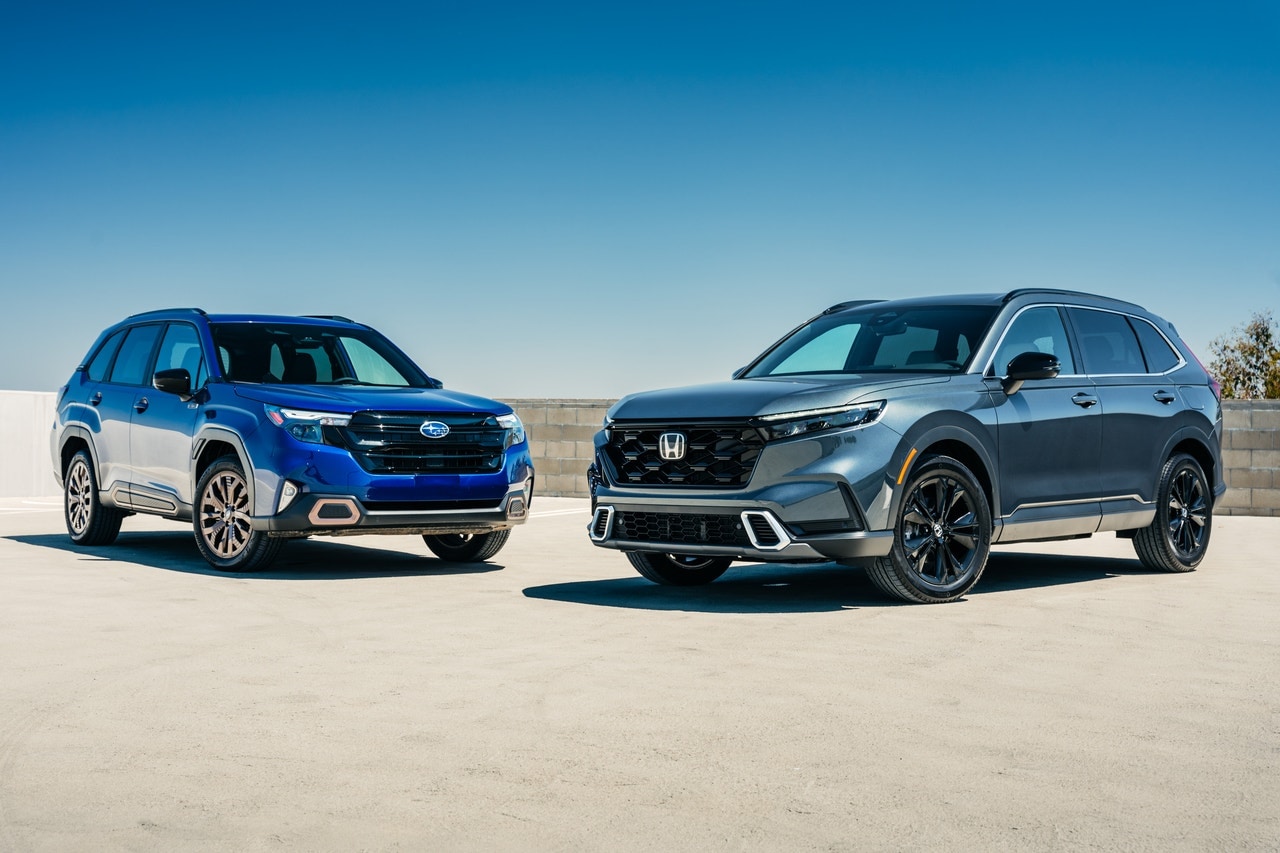
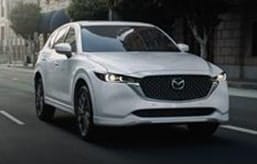
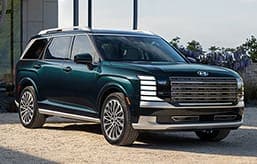
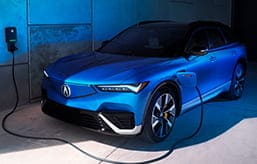
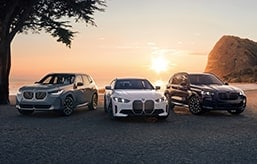
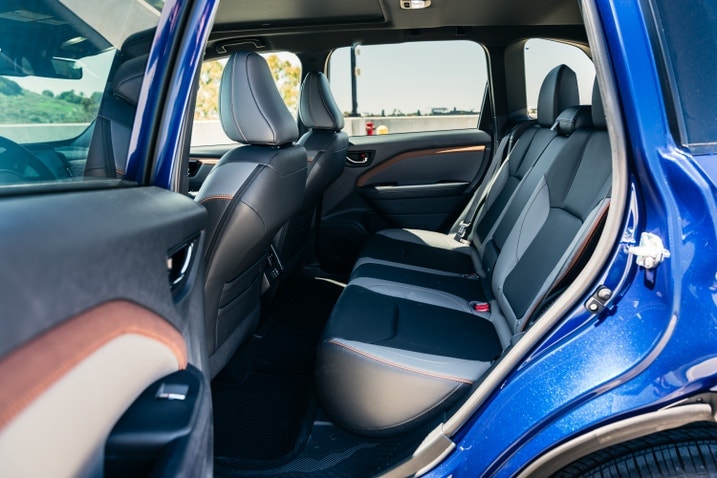
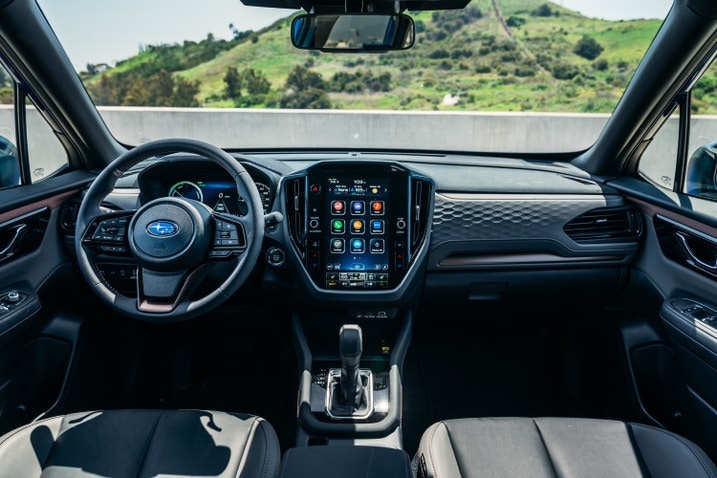
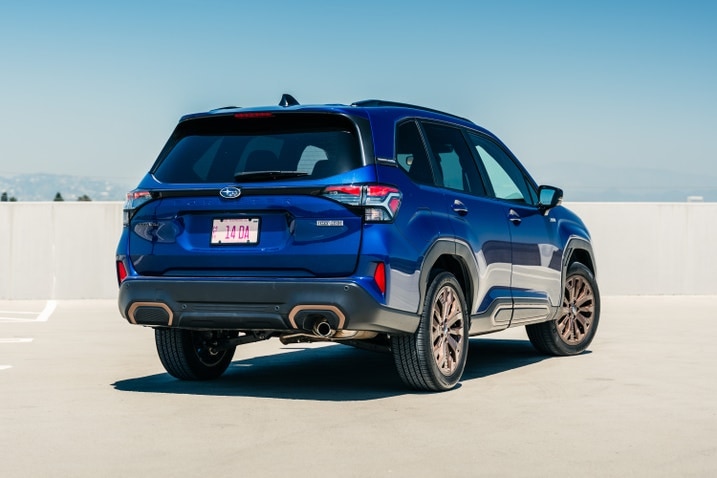
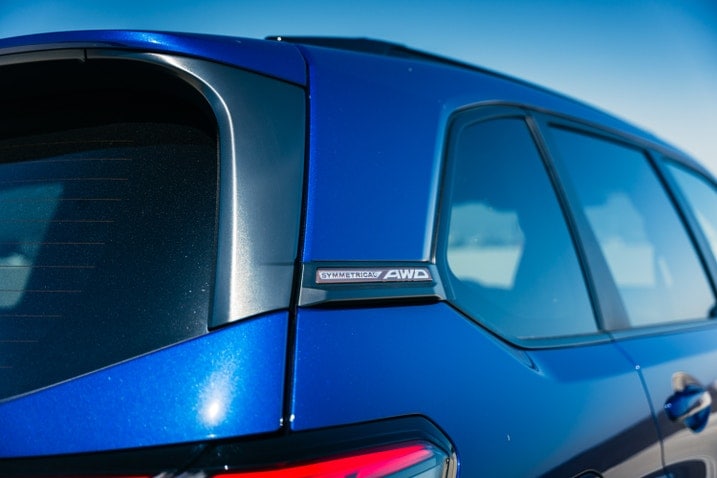
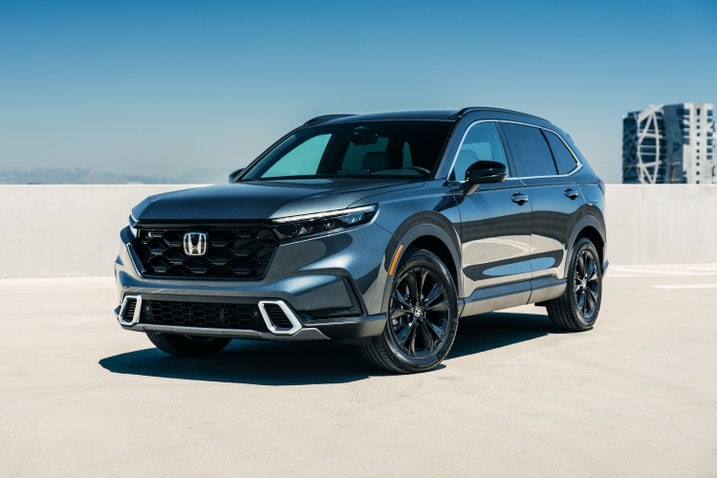
 by
by  edited by
edited by